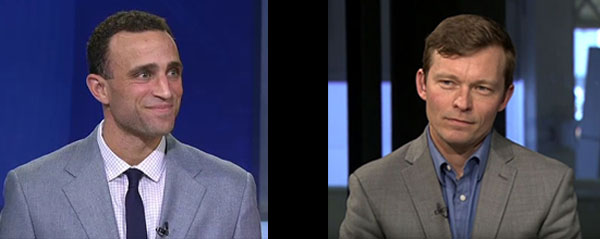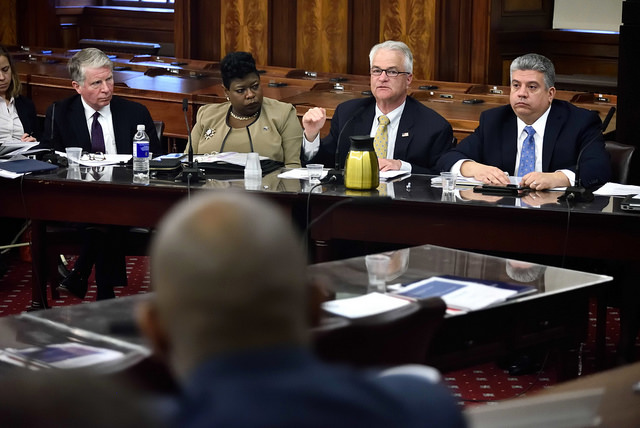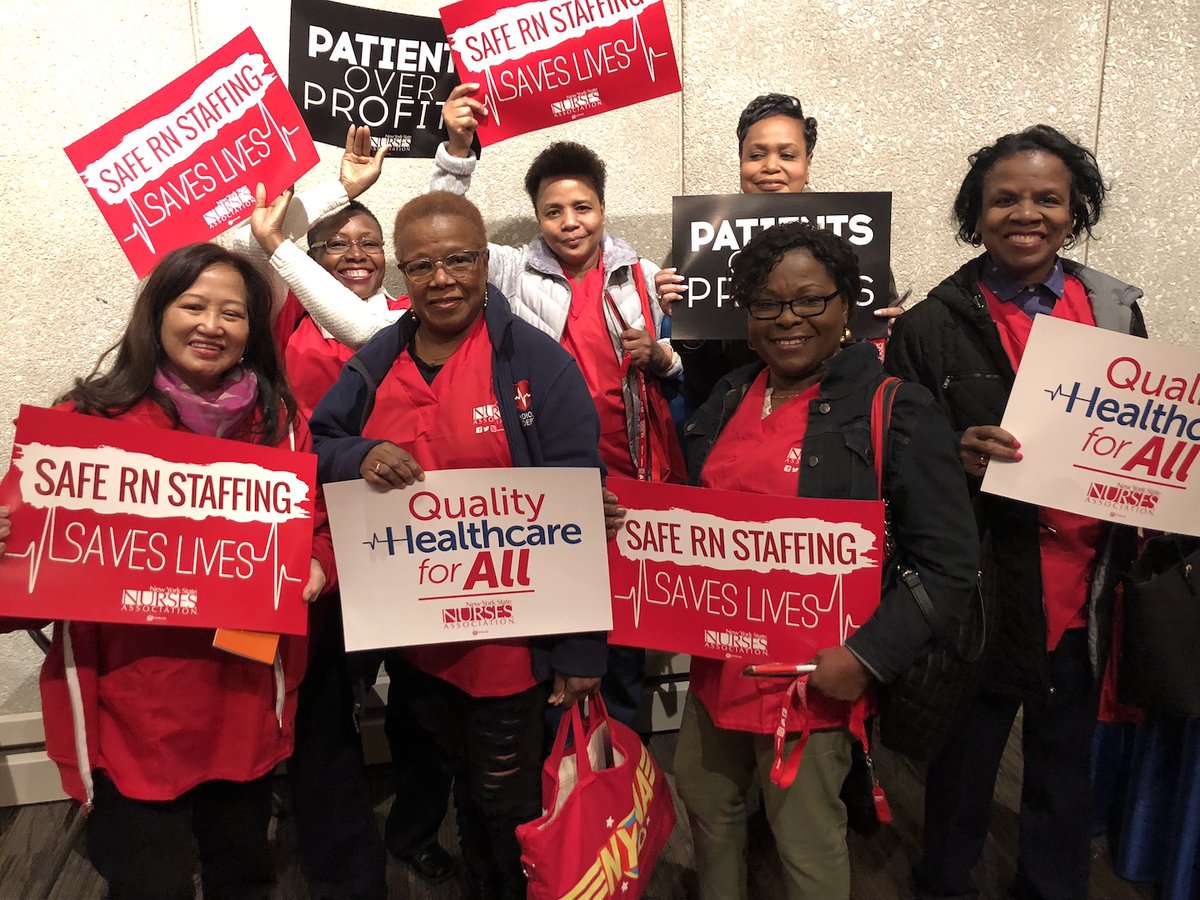Max & Murphy Podcast: The Push for Criminal Justice Reform, with Tina Luongo of Legal Aid Society

Ben Max, left, of Gotham Gazette, and Jarrett Murphy, right, of City Limits
March 13, 2019 - Max & Murphy Podcast: The Push for Criminal Justice Reform, with Tina Luongo of Legal Aid Society
 With major criminal justice reforms being debated and negotiated in Albany, Tina Luongo of the Legal Aid Society joined the show to discuss the details of bail, speedy trial, and discovery reform that public defenders and other advocates want to see from state government.
With major criminal justice reforms being debated and negotiated in Albany, Tina Luongo of the Legal Aid Society joined the show to discuss the details of bail, speedy trial, and discovery reform that public defenders and other advocates want to see from state government.
Listen to the conversation and let us know what you think -- we're on Twitter @TweetBenMax and @JarrettMurphy. You can listen to the show through the embedded audio below or download the episode wherever you get your podcasts, under "Max & Murphy," and listen to Max & Murphy live on Wednesdays at 5 p.m. on WBAI radio, 99.5FM or wbai.org
***
by Ben Max, Gotham Gazette
@tweetBenMax @GothamGazette
State District Attorneys Association Targeted as Roadblock to Reform

District Attorneys (photo: John McCarten/City Council)
Advocates who are pushing to reform the criminal justice system by focusing on the powerful role that district attorneys play as enforcers of the law often cite Larry Krasner as a model. Krasner was elected the district attorney of Philadelphia in 2017 on a comprehensive reform platform and in November last year, just 11 months into his first term, he pulled out of the statewide Pennsylvania District Attorneys Association. Krasner blamed the association for holding back much-needed reform and advocating for overly harsh prosecutorial policies.
Reformers and advocates in New York hailed Krasner’s withdrawal as an example to follow. They’ve long argued that the District Attorney’s Association of the State of New York (DAASNY) is one of the biggest roadblocks to criminal justice reform making its way through the state Legislature. DAASNY essentially acts as a lobbying group for prosecutors, critics say, and attempts to water down legislation to maintain the already significant discretionary authority that individual district attorneys enjoy.
“Ultimately this is about power not wanting to lose power,” said Erin George, statewide Criminal Justice Campaigns Director for Citizen Action of New York. “The DA’s association is set against reforms that would threaten the unbridled power they have in the current pretrial system to railroad New Yorkers and drive the case outcomes and convictions that they’re looking to secure.”
It’s a harsh assessment backed by years of seeing DAASNY oppose efforts to change New York’s drug sentencing laws, early release policies, criminal charges for gravity knife possession, and a commission to investigate prosecutorial misconduct. This year, with Democrats in full control of the Legislature, advocates are again seeing the largely invisible hand of DAASNY guiding legislation to reform the state’s discovery, bail, and speedy trial laws. George said the association’s “fear mongering narratives and dog whistle tactics” become “the political narrative that has to be responded to and the issues sort of avalanche.”
Last month, a coalition of advocacy groups including Citizen Action, VOCAL-NY, New York Communities for Change, and JustLeadershipUSA formally sent letters calling on several sitting district attorneys who call themselves progressives to step down from DAASNY, publicly disavow the association and support reform legislation in Albany. The letters were sent to Brooklyn DA Eric Gonzalez, Manhattan DA Cy Vance, Erie County DA John Flynn, Suffolk County DA Timothy Sini, and Nassau County DA Madeline Singas.
“DAASNY is once again, the primary opposition to passing legislative changes that would advance justice, equity and an end to mass incarceration in New York State,” the letter reads. Early last month, Citizen Action also sent a similar letter directly to Albany DA David Soares, a Democrat and the current president of DAASNY.
Soares was elected as a reformer himself but has since disappointed activists who say he has acted more in DAASNY’s interests than in the interests of justice. But he rejects their criticism.
“There is an unfortunate misperception that DAASNY is opposed to reform. This is far from the truth," Soares said in a statement to Gotham Gazette. “For decades DAASNY has been at the forefront of alternatives to incarceration programs. We supported legislation to allow the sealing of past criminal convictions and to help convicted offenders obtain a second chance.”
He said that DAASNY supports both discovery and bail reform but does not support “discovery measures that threaten the safety of victims and witnesses” or “bail reform measures that undermine the safety of domestic violence and sexual assault victims.” Soares was among 15 prosecutors who recently wrote to Governor Andrew Cuomo, Senate Majority Leader Andrea Stewart-Cousins, and Assembly Speaker Carl Heastie to profess support for ending cash bail and overhauling the state’s bail system. “The only people who should be detained pretrial are those who a judge finds pose a specific, clear and credible threat to the physical safety of the community, or who are a risk of intentionally evading their court dates,” they wrote.
For advocates like George, the issue at hand is DAASNY’s “unbridled power, unequal power” in Albany. Just as individual DA’s leverage their authority to win favorable pleas, even if it means withholding evidence that could be beneficial to defendants until just before trial, they say DAASNY leverages its authority to impact bills that have been moved through grassroots efforts.
Nick Malinowski, civil rights campaign director of VOCAL-NY, said DAASNY’s role has become all that more apparent this year. In past years, Republicans held the state Senate and were more often than not opposed to the types of progressive bills being championed by Democratic legislators and advocacy groups. Yet, DAASNY has continued to push back against reform. “What we’re seeing is the impact of DAASNY, which traditionally had been influencing Republicans. It’s having a similar influence even with a Democratically-controlled Senate,” Malinowski said. “They’re doing the same type of fear-mongering.”
Malinowski cited outright misinformation being put out by the association. For instance, in an op-ed in the Times Herald Record, Orange County DA David Hoovler, the vice president of DAASNY, argued that the governor’s discovery reform proposal being considered in Albany would open up witnesses to intimidation and threat since it would make their addresses public. “That’s not actually what’s in the bill and these guys know that,” Malinowski pointed out, noting that the bill allows prosecutors to provide “adequate alternative contact information” of witnesses instead of addresses. That could include an email or phone number, Malinowski said. Bills introduced in the state Legislature similarly contain witness protections.
“DAASNY, which is a lobbying group for prosecutors, like any other advocacy group, they are in Albany lobbying legislators to increase the power and influence of their constituents, which are prosecutors,” he added. “Their constituency is not crime victims, it’s not voters, it’s not the public. It’s prosecutors.”
While DAASNY does influence legislation and the legislative process, its leaders are not registered lobbyists. Soares opposes use of the term lobbyist group, instead calling DAASNY a trade organization.
Vance’s office declined to comment for this story. The Albany Times Union reported that he and others targeted by the coalition of advocates did not plan to leave DAASNY.
Advocates are hoping to make membership in DAASNY a litmus test for progressives, as is evident in Queens. Seven candidates are hoping to secure the Democratic primary nomination for Queens DA June 25 as DA Richard Brown, who has been in office for nearly three decades, is retiring as of June 1. His term ends this year. In the mix are several candidates trying to out-progressive each other. Most, if not all, have said they will reform the office, which has jurisdiction over the city’s most diverse and second-largest borough.
Two of the candidates, City Council Member Rory Lancman and public defender Tiffany Cabán, have pledged that they will not join DAASNY. Lancman has said he has seen DAASNY’s obstructive efforts firsthand when he was a member of the state Assembly. “I'm not joining DAASNY. And I plan on having a *robust* legislative affairs office to lobby for real reform in Albany & NYC (and Washington where necessary),” he tweeted in October last year. “If you're an elected official fighting for reform, I'm going to have your back.”
Similarly, Cabán called out DAASNY in a tweet last month for lobbying against the open discovery bill. “The DA Association of the State of New York is wrong to oppose it, which is why I will exit DAASNY & work instead with DAs who share our values,” she wrote.
Soares did not seem to take kindly to those pledges. “My advice to those District Attorney candidates who are pledging to not join DAASNY as part of their campaign tactic is this: Rejecting DAASNY may make you a political darling amongst a small segment of supporters, but it won't make you a better prosecutor.”
The other candidates in Queens haven’t been as willing to shun DAASNY, even as they say they disagree with the association’s positions on certain reforms. Among them are former State Supreme Court Judge Gregory Lasak, Queens Borough President Melinda Katz, former prosecutors Mina Malik and Betty Lugo, and Jose Nieves, a former senior prosecutor in the Brooklyn DA’s office. (Emma Whitford reported for Gotham Gazette that Lugo and Nieves intended to join DAASNY, even though both have expressed reservations about the association’s position on discovery reform).
Lasak said in a statement that he intends to implement or advocate for several reforms after joining DAASNY, including creating a Conviction Integrity Unit, expanding diversion programs, and ending cash bail on low-level, non-violent offenses. “I’ve always believed that the best way to change an organization is from within,” he said. “It’s easy to throw stones from the outside but it won’t effect [sic] real change.”
Malik, similarly, argued that it would be “misguided” to leave Queens’ 2.4 million residents “without a voice in the room” even as she said she disagrees with DAASNY on bail and discovery reform. “My role with DAASNY would be to advocate for Queens and to organize from within to empower progressive DAs. I would keep all options on the table, including withdrawal, if membership in DAASNY proves fruitless to those aims,” she said in a statement.
Katz said she intended to “export” the progressive policies she implements in the Queens DA’s office to the association’s other members. “You can’t be heard if you’re not at the table,” she said in a phone interview. “I think you can institute the policies that we care deeply about here, like no cash bail, like discovery reform...I can do all of that without legislation in Albany. I’m strong enough to believe that should I be sitting on an organization that has the other DAs on it, that I can help move them in that direction too.”
Advocates, however, are hoping their collective clamor will make DAASNY a pro.minent enough issue for voters who are increasingly beginning to pay attention to how district attorneys wield their power. Malinowski issued a simple warning. “You can’t say that you’re a progressive prosecutor and then at the same time be part of a lobbying group that is trying to kill every piece of progressive legislation.”
***
by Samar Khurshid, senior reporter, Gotham Gazette
@samarkhurshid @GothamGazette
Note - This article has been updated to clarify a quote from Erin George of Citizen Action
New York Nurses Threaten Major Strike Over ‘Understaffing’

(photo: @nynurses)
During one night shift at the children’s hospital where she worked as a nurse, Nicolette Mabeza‘s unit filled up with intubated children. She and the other nurses were frantic.
“It was just the entire floor running around,” said Mabeza, who worked in the intensive care unit at NewYork-Presbyterian Morgan Stanley Children’s Hospital in Washington Heights. “Some nurses had two intubated patients and they weren’t even right next to each other.”
Nurses stretched to the limit by understaffing would regularly cry on the job, she said.
“Not only does it make you feel that you’re being a terrible nurse,” said Mabeza. “You also wonder, why should patients come here if nurses can’t give the adequate care that they deserve?”
Feeling that she could no longer do her job in good conscience, she quit last April after less than a year at the hospital.
After years of complaints, understaffing has become a major point of conflict between the nurses union and private hospitals in New York City.
Around 13,000 nurses could strike this month if negotiations fail between the New York State Nurses Association and a group of three major hospital systems, union leaders say.
Nurses from Montefiore, Mount Sinai, St. Luke's-Mount Sinai West, and New York-Presbyterian hospitals authorized a strike last week and announced a rally for safe staffing on Monday, March 18 at Mount Sinai Hospital in East Harlem.
“We’re saying enough is enough,” said Carl Ginsburg, a spokesperson for the union, which represents 37,000 nurses. “No sooner do we make a deal than we drift back into this danger zone.”
He said contract negotiations have slowed to a crawl with the New York City Hospital Alliance, an informal bargaining group of private hospitals that includes Montefiore, New York-Presbyterian, and Mount Sinai hospitals.
On the bargaining table is an increase in nurse-to-patient ratios in emergency rooms and intensive care units. Staffing levels have reached dangerously low levels, putting the safety of both nurses and patients at risk, Ginsburg said.
“Sometimes where a nurse should be caring for five patients, she’s caring for eight or 10,” said Ginsburg. “Make no mistake – it’s dangerous.”
In 2018, more than 12,000 nurses signed “Protest of Assignment” forms to complain about unsafe conditions at Montefiore, Mount Sinai, and New York Presbyterian.
A spokesperson for the NYC Hospital Alliance said that hospitals are financially stretched because of state Medicaid cuts. He added that the recent “Protest of Assignment” forms account for a negligible portion of the total number of nurse shifts.
Understaffing at hospitals forces nurses to make tough choices, said Anthony Ciampa, a nurse at New York Presbyterian for the last 14 years.
“I had to make the decision whether to hang blood or to help an elderly patient eat,” said Ciampa. “No nurse should be forced to make these types of decisions.”
The elderly patient sat in front of the food – unable to eat – while Ciampa took care of the blood transfusion, he said. By the time Ciampa was able to help, the patient’s food tray had been removed, untouched.
“I’m still upset about that,” said Ciampa, who is currently representing the union in contract negotiations. “It was like torture to sit there with the meal in front of you and not be able to eat it.”
Outside Brooklyn Hospital Center last month, nurses were reluctant to talk about staffing conditions, fearing retaliation from their employers.
“Everybody’s understaffed,” said a medical assistant who requested anonymity and said she has worked at the hospital for more than 20 years. “The patients are not getting adequate care.”
But the NYC Hospital Alliance denied reports that understaffing is leading to unsafe conditions, and said that enforced staffing ratios would be costly and ineffective.
“The reality is that the union’s rigid, mandated staffing ratios would lower the quality of patient care by overriding the professional judgment of nurses and healthcare professionals and crowding out other members of the care team,” said Linden Zakula, a spokesperson for the group.
Zakula said that state budget cuts to Medicaid have resulted in a loss of $240 million in expected funding for the three hospital groups combined.
“Alliance hospitals respect our nurses and are committed to bargaining in good faith,” said Zakula. “We are doing everything we can to reach an agreement that is fair, reasonable, and responsible for all parties.”
In the last few years, several New York City Council members have shown support for more staffing regulation at hospitals.
“Nurses are some of the most important people in the hospital,” said New York City Council Member Carlina Rivera. “It’s important that they feel they have the resources they need to be supported in some of the most stressful environments.”
Rivera, who chairs the Council’s Committee on Hospitals, cosponsored a resolution in 2018 that called on the state Legislature to pass the Safe Staffing for Quality Care Act.
The bill would set specific nurse-to-patient ratios by hospital unit, and would ensure that nurses can’t be assigned to more patients than specified. Hospitals that break the law would be fined.
But there is no vote in sight for either the Council resolution or the state bill, which are both stuck in committee.
For many years, safe staffing legislation was met with resistance from Republicans who controlled the New York Senate.
Last week, New York Assemblymember Karines Reyes said she was confident that the Senate’s new Democratic majority would bolster the bill’s chances of passing.
“Apart from the Republican Senate’s pushback in past years, the primary obstacle posed to the legislation stems from the conflicting opinions of hospital administrators,” said Reyes, who is also a registered nurse in the Oncology Department at Montefiore Einstein Hospital. “These points of view fail to acknowledge that safe staffing is about saving lives. The legislation is paramount to the safety and outcomes of patients while not only providing adequate staffing to nurses, but to ancillary staff as well.”
While several states have laws that address nurse staffing, California is the only state that requires hospital units to maintain a minimum nurse-to-patient ratio.
Under that law – in effect since 2004 – critical care units in California must have at least one nurse for every two patients. The required nurse-to-patient ratio varies by department, with 1-to-4 for labor and delivery units and 1-to-6 for psychiatric units.
A 2010 study published by the National Institutes of Health found that mandated nurse-to-patient ratios resulted in fewer patient deaths and better morale for nurses compared to other states without similar legislation.
***
Gaspard Le Dem is a freelance journalist. On Twitter @GLD_Live.
@GothamGazette
Note: this story has been updated to change $300 million to $240 million based on corrected information provided by Zakula of NYC Hospital Alliance.




